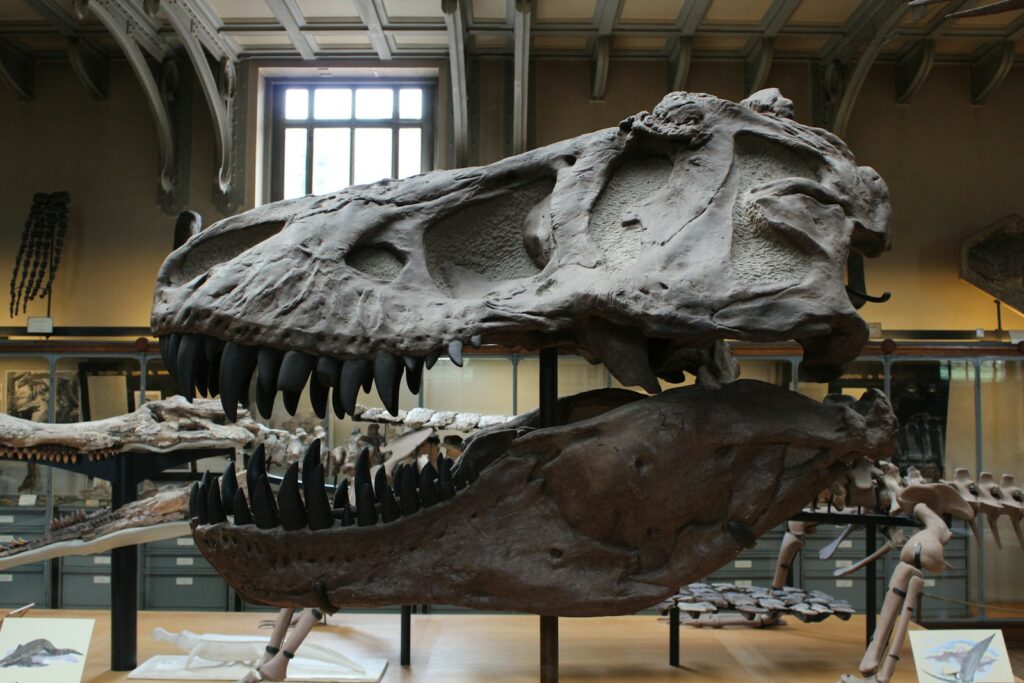The quest for new dinosaur species has been a source of fascination and scientific exploration for decades. Far from being merely an academic endeavor, this search contributes to our understanding of Earth, the life it hosts, and even humanity’s future. In this article, we delve into the reasons behind our undiminished interest in discovering new dinosaur species and why this line of research remains relevant to humanity.
 Unraveling Earth’s Geological and Biological History
Unraveling Earth’s Geological and Biological History
Dinosaurs roamed the Earth for over 160 million years, dominating its ecosystems in ways no creatures have since. Each new dinosaur species we discover offers unique insights into the planet’s geological and biological history. By studying these ancient beings, scientists can piece together the puzzle of Earth’s past landscapes, climates, and the evolutionary processes that shaped life as we know it. Understanding the shifts in biodiversity and the dynamics of extinction and survival provides critical context for current environmental and ecological challenges.
The Evolutionary Tale
Dinosaurs are pivotal characters in the story of life on Earth. Uncovering new species fills in gaps in the evolutionary tree, helping scientists understand how traits evolved and diversified over time. This knowledge extends beyond dinosaurs, offering lessons on adaptation and survival that apply to all life forms, including humans. For instance, studying the physiological adaptations of dinosaurs to their environments can shed light on how current species might adapt to changing climates.
Recent discoveries in the field of paleontology
Recent discoveries in the field of paleontology have not only expanded our catalog of dinosaur species but have also provided new insights into their behaviors, ecologies, and evolutionary histories. These discoveries not only expand our knowledge of dinosaur diversity but also challenge existing theories and open new avenues of research. By studying these ancient creatures, scientists can uncover patterns of evolution, behavior, and adaptation that shed light on the history of life on Earth. Each new discovery is a piece of the puzzle, bringing us closer to understanding the complex tapestry of life that has shaped our planet over millions of years.
Here are a few notable examples of recent discoveries:
Ubirajara jubatus (2020)
Discovered in Brazil, Ubirajara jubatus is a small, feathered dinosaur from the Early Cretaceous period. What makes this dinosaur remarkable is its unique mane of long fur-like structures and two ribbon-like features protruding from its shoulders. This discovery provides evidence of ornamental feathers not used for flight, suggesting complex social behaviors such as display or mating rituals. It highlights the diversity in feather evolution and its uses beyond temperature regulation and flight.
Spinophorosaurus nigerensis (Reanalysis in 2020)
Originally discovered in Niger, a reanalysis of Spinophorosaurus nigerensis’ tail vertebrae suggests this sauropod dinosaur could have had a weaponized tail, similar to that of ankylosaurs. This finding is significant because it suggests that defensive tail weapons evolved independently in different dinosaur lineages, offering new insights into how dinosaurs adapted to their environments and potential predatory threats.
Vectaerovenator inopinatus (2020)
Found on the Isle of Wight in the UK, Vectaerovenator inopinatus is a new species of theropod dinosaur from the Late Cretaceous period. The dinosaur’s vertebrae have large air spaces, a trait that likely helped reduce weight and might have been connected to its respiratory system. This discovery adds to our understanding of theropod skeletal evolution and the adaptations that may have facilitated their predatory lifestyle.
Oksoko avarsan (2020)
A newly discovered species of oviraptorosaur, Oksoko avarsan, was found in Mongolia. Interestingly, this dinosaur had only two fingers on each forearm, unlike its relatives, which typically had three. This adaptation could reflect a change in diet or behavior and underscores the evolutionary flexibility among oviraptorosaurs. It also raises questions about the ecological pressures that drove such a morphological change.
Bagualosaurus agudoensis (2018)
Unearthed in Brazil, Bagualosaurus agudoensis is a primitive sauropodomorph dinosaur from the Late Triassic period. This discovery is critical for understanding the early stages of sauropodomorph evolution, providing clues about the transition from bipedal to quadrupedal locomotion in the lineage that would eventually lead to the giant sauropods.
Extinction Events: Learning from the Past to Protect the Future
The sudden disappearance of dinosaurs, caused by a catastrophic event around 66 million years ago, serves as a stark reminder of the fragility of life on Earth. By studying the conditions leading up to and following this mass extinction, researchers can gain insights into the potential threats facing our planet today, such as climate change, habitat destruction, and biodiversity loss. Understanding past extinction events helps us develop strategies to mitigate the impact of similar challenges, ensuring the survival of the current biodiversity, including humanity.
Advancements in Science and Technology
The search for new dinosaur species often drives innovation in science and technology. Techniques such as remote sensing, 3D scanning, and molecular analysis have not only revolutionized paleontology but have also found applications in other fields, from environmental conservation to medical research. As we develop and refine tools to uncover and study ancient life, we simultaneously advance our capabilities to address contemporary scientific questions and challenges.
Education and Public Engagement
Dinosaurs capture the public’s imagination like few other subjects, making them powerful tools for education and engagement with science. The discovery of new dinosaur species fuels interest in scientific inquiry and natural history among people of all ages. By sharing the stories of these ancient creatures and the scientists who study them, museums, educational institutions, and the media can inspire the next generation of scientists, conservationists, and informed citizens.
Cultural and Historical Significance
Finally, the continued discovery of new dinosaur species enriches our cultural and historical heritage. These ancient creatures are part of the Earth’s legacy, and each discovery adds to our collective knowledge and wonder. Dinosaurs remind us of the Earth’s deep history and our place within it, fostering a sense of connection to the planet and a responsibility to protect it.
Conclusion
The ongoing quest to discover new dinosaur species is much more than a pursuit of knowledge about the distant past. It is a journey that offers profound insights into life’s complexity, resilience, and interconnectedness. By understanding the lives of these remarkable creatures, we gain perspective on our own place in the natural world, the challenges we face, and the future we hope to secure. As such, the search for new dinosaur species remains a vital and endlessly rewarding endeavor for humanity.




